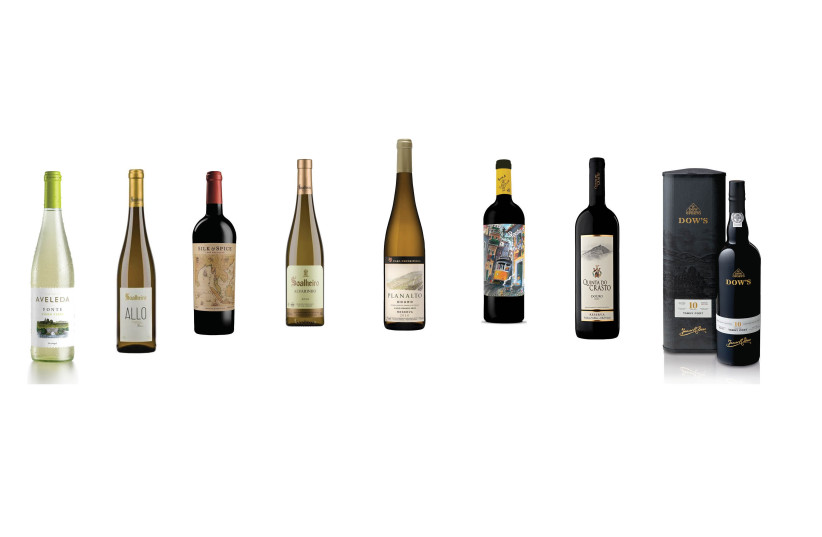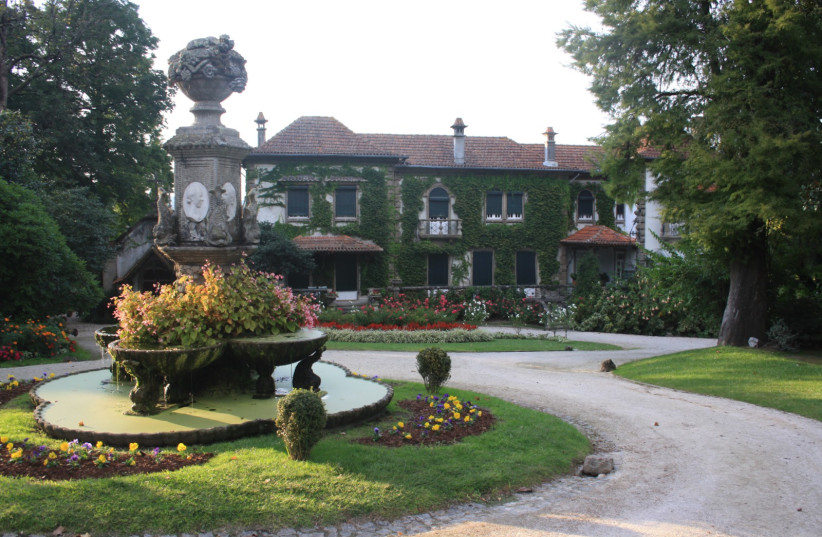My first contact with Portuguese wine was in the 1980s. The drinks company with whom I worked in the UK was the agent for Mateus Rose and Aveleda Vinho Verde, and also used to list Warre’s Port and Blandy’s Madeira. This to me was the extent of my knowledge of Portuguese wine.
When I came to Israel, the situation was even worse. The only Portuguese brands I remember seeing on the shelves were Mateus Rose and Sandeman’s Port.
Yet by the year 2000, I already understood that Portugal was far more than Port and Mateus Rose. So much so, that I confidently predicted Portugal would be the next big thing in the world of wine. The beauty of the country, the many indigenous grape varieties, the drinkability of the wines and their incredible value, were the reasons I thought Portuguese wines would catch on. It is not necessarily a compliment to say that come 2020, I again predicted Portugal would be the next trend, and I am far from alone, which gives me the confidence that this time I may be right.
In Israel we were very focused on imports from France, Italy and Spain up to two to three years ago. Now, however, the floodgates have opened and many exotic countries now have their wines sold in our wine shops and restaurants. As for Portugal, most of the major importers now list Portuguese wine and I am pleased to see my old friends Mateus, Aveleda, Warre’s and Blandy’s are all here.
Portugal is a long thin country, and similar to Italy, Chile and Israel, it has an enormous variety of microclimates. Nothing more emphasizes the extremes than their two most well-known wine regions in the north of the country. In the northeast, there is the Douro, hot, semi-arid and breathtakingly beautiful, with steep terraced vineyards and schist soils, plunging down to the Douro River, which snakes its way across the country to the city of Porto. This is the region of the world’s most famous dessert wine, Port and its high-alcohol, rich, full-bodied sweet red wines. The most famous varietal is the Touriga Nacional, which is also grown in Israel. Necessity is the mother of invention. Today some really high-quality red table wines are being made in the Douro. Look for the wines of the Douro Boys, a similar quality-driven group to our own Judean Hills Quartet.
In the northwest, is the Minho region. This large area is green, often wet, luscious and fertile. The soils are granite. The famous wine of the region is Vinho Verde. This can be light, spritzy, low-alcohol with piercing acidity. The wines can be dry, off dry, even semi dry. The main variety of the Minho is the Alvarinho (known as Albarino in Spain). These two regions could not be more different, and they are the main regions represented in Israel.
THERE ARE other regions all offering their own unique characteristics. The Dao region south of the Douro produces some serious red wines, which are more elegant than the table wines from the Douro. Bairrada, sandwiched between the mountains and the sea, is also known for its red wines, made from the Baga variety, which are quirky, acidic and tannic. It is a variety I have grown to love and look for. The coastal area north of Lisbon is a large region producing fresh white wines, perfect with fresh fish from the cold Atlantic. This includes the unique vines of Colares, which sprawl across the sandy soils to be protected from the winds. A remarkable sight! South of Lisbon is Setubal, famous for its signature dessert wine Moscatel de Setubal.
Then there is the Alentejo, which is almost a third of Portugal. This is the California of Portugal. There are gently rolling hills and plains, and baking sun. Here vineyards are interspersed with olive groves, cork tree forests, fields of wheat and plenty of sheep! It is a fascinating region for progressive winemaking, a variety of wine styles, producing ripe expressive wines. Most wines are blends and quite often the grape varieties are not mentioned. We have to cure ourselves of the obsession to know every variety when you drink Portuguese wines!
We should not forget Madeira, a volcanic island producing unique dessert wines. There was a time when Port and Madeira ruled the world. In the 18th-19th centuries the Brits drank Port. Moses Montefiore was an example. He drank a bottle every day and lived into his 101st year, an astonishing age at his time. In the USA, Madeira was the go-to wine. Collectors like Thomas Jefferson sought Madeira above all.
I tasted a selection of wines available in Israel, which are as yet mainly from large commercial wineries. Someone contacted me with barely disguised disgust and superiority, outraged that I was tasting big brands. My answer was that I was looking at what is currently available in Israel, and I have no shame in recommending large brands if they taste good. After all this column is geared to real drinkers, not the wine police or wine intelligentsia! I list here only the best of what we tasted.

Casal Garcia Vinho Verde 2019: This was delightfully drinkable. Fresh and fragrant with crisp acidity. A refreshing CO2 spritz but not too much. Delicate fruit on the nose. This is the big brand of Vinho Verde; I am not saying it had great complexity or rare quality, but as a summer wine for simple refreshment, it ticked the boxes. NIS 45.
Aveleda Fonte Vinho Verde 2019: Delicate nose of crunchy green apple, grapefruit and lime, with a steeliness in the mouth and a nice texture. It was refreshing and beautifully balanced. Screw cap. So sensible, and great value from one of Portugal’s largest wine groups. NIS 45.
Casa Ferreirinha Planalto 2018: Nice wine from the Douro showing good fruit, and complexity from a blend of seven varieties. I would like to try a fresher vintage, but all the same showed well. Likely to be in Tiv Taam. NIS 65.
Soalheiro Allo 2020: This was my favorite white of the tasting. A blend of Loureiro and Alvarinho, respectively providing elegant fruit and structure. The wine had a light spritz, was lively, fresh, grassy with a touch of green apple. 11.5% alcohol. NIS 78.
Soalheiro Alvarinho 2020: This has citrus notes and delicate tropical fruit. It was intense, minerally and crisp with great acidity. I really liked this. It is an excellent wine. NIS 106.
Crasto Superior White 2018: Creamy, oaky wine with tropical fruit, a nuttiness and sweetness on the finish. Well balanced with a full mouth feel. A good example of a quality white from the Douro. NIS 87.
Alphros Daphne 2018: New import by the Shaked-Derech Ha’yayin group, as part of their new “Green Catalogue” for Organic, Biodynamic, Natural and Orange wines. Alphros is the pioneer biodynamic and ecological winery. This is a biodynamic wine made from the Loureiro variety. The wine went through more skin maceration than usual and it was aged in old barrels and concrete. The wine is minerally, with hints of lemon and a flowery aroma, with a saline character. More complex and certainly different, from the default Vinho Verde. NIS 135.
Mateus Rose NV: At this year’s Portugal National Day event, we stood around the pool drinking 187 ml. bottles of ice cold Mateus Rose with a straw! It seemed the right wine for the right occasion. Mateus Rose became one of the largest selling brands due to its flask-shaped bottle (source of a plethora of original bedside lamps in the dorms of universities and colleges in the 1980s). It is still a rose, slightly sparkling (frizzante) and unapologetically semi dry, bordering on medium. It is part of the history of brand building. Mateus is owned by Sogrape, the largest winery in Portugal. They also produce a white version, another rose made from Tempranillo and some sparkling wines. The wine world is a broad church. People who like Mateus Rose, like it very much, and everyone should feel comfortable drinking what they want. NIS 45.
Porta 6 Red 2020: This brand’s labels feature the color, buzz and atmosphere of Lisbon, through the painting of an eccentric German, who lives in there. Simple maybe, but so fruity and drinkable, as well as refreshing! It is a super everyday wine, often well-priced in the Derech Ha’Yayin wine stores. NIS 48.
Silk and Spice 2018: This wine is a blend of Touriga Nacional, Alicante Bouschet, Baga, and Syrah. It has lots of black fruit, with sweet vanilla. I don’t wish to give the impression this is a mind-blowing wine, but it is soft, round, quite plush and could be a crowd pleaser. The touch of sweetness will not bother the many that like this style of wine, but it is in no way sweet. You will find this in Tiv Taam amongst other places. NIS 69.
Quinta do Crasto Reserva 2017: This is a mouthful of wine. Deep, intense, full-bodied, full of flavor and not initially approachable due to a firm, tannic structure. However with time it opened and truly showed the potential of Douro table wines. The next day, with added aeration it tasted even better. NIS 155
For those of us brought up with sweet red kosher wine, Port offers the opportunity to taste what we have been missing all these years. They are the ultimate in fortified red dessert wines. In our tasting, two stood out. Graham’s LBV Port 2015. We found this to be the best of the LBV Ports we tasted. Late Bottled Vintage is a port from a single year, bottled after four to six years in barrel. It had a deep ruby color, ripe black fruit flavors, cherries, an intense taste and persistent finish. It would be ideal with blue cheese, like Stilton and dark chocolate desserts. NIS 110.
Dow’s Tawny 10-year-old: Tawny Port is basically a non-vintage red Port aged in wood. This was a beautiful expression of the genre. It has dried fruit notes, caramel, raisins and a nutty character. A little bit like one of those brandy-doused Christmas fruit cakes. It will go well with chocolate desserts, nut-based pies or aged, hard chesses. Both Graham’s and Dow’s, one founded by Scottish brothers, the other by Portuguese, are now owned by the Symington family, the most famous name in Port.

It is exciting there is a new twinning program being developed between Israeli and Portuguese wineries, which should encourage wine tourism both ways. It is true the range of wines in Israel barely scratches the surface. There are many more wines and regions that I hope in time will make their way to our shores. In the meantime, it is worth getting acquainted with Portuguese wines. There is so much more to the story, than just Port!
The writer, a wine industry insider turned wine writer, has advanced Israeli wine for 35 years. He is referred to as ‘the English voice of Israeli wine.’ www.adammontefiore.com
